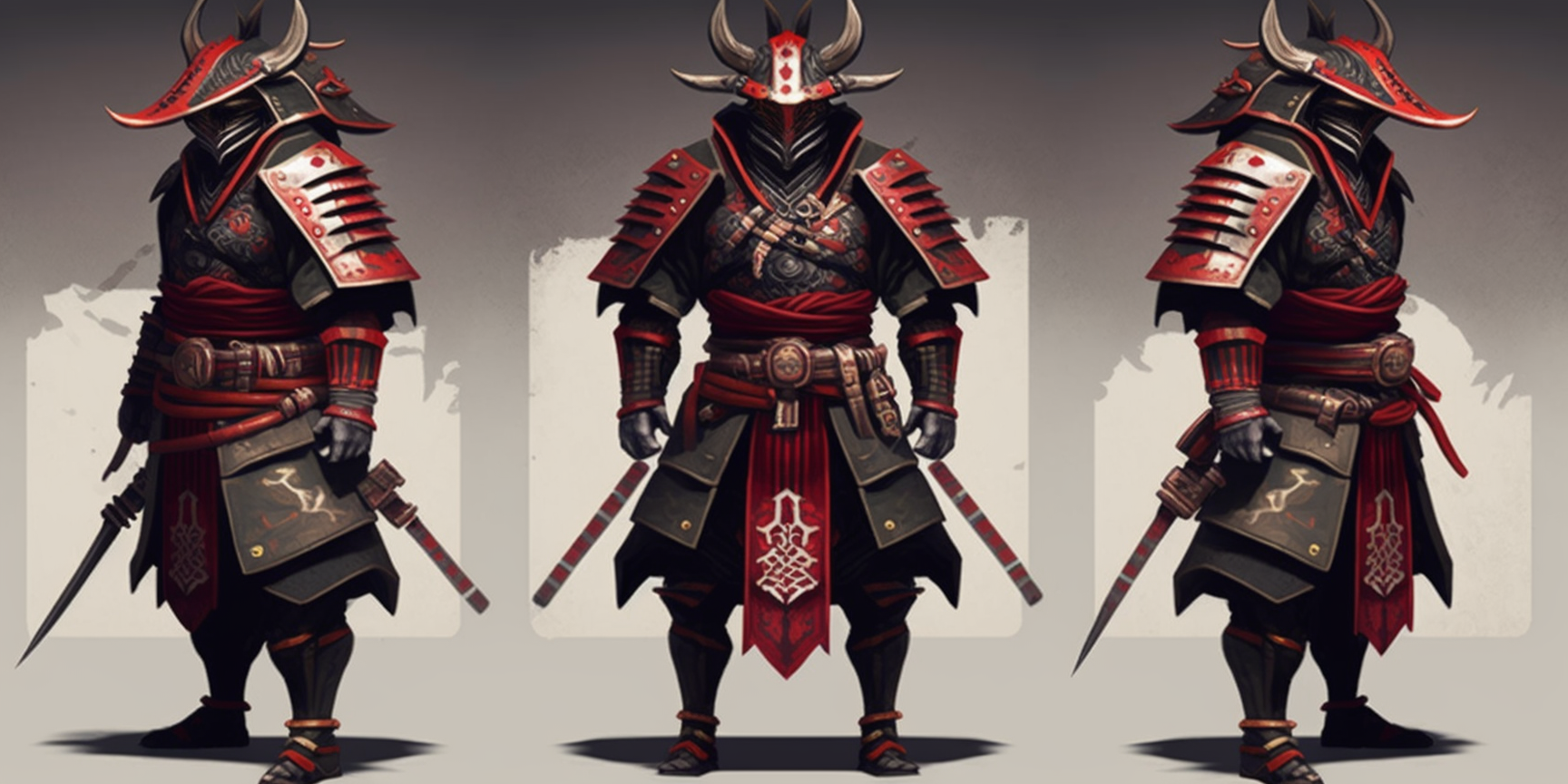What is the Origin of Samurai Swords?

What is the Origin of Samurai Swords?
The origin of samurai swords dates back to the 12th century, a time when Japan's samurai class emerged as a dominant force. Early Japanese swordsmiths used materials like iron ore and iron sand, carefully selecting the best type of steel based on its carbon content. The traditional process of forging the blade involved heats, hammers, and folds the steels to create a stronger, more resilient blade. This meticulous technique led to the creation of blades with a razor-sharp edge, ideal for the demands of combat.
Samurai swords such as the katana and wakizashi were not just weapons but also considered a work of art, embodying the spiritual and cultural significance of samurai culture. The influence of Zen Buddhism was present in the swordsmithing process, with a focus on balance and precision. These swords were forged with an understanding of harmony and craftsmanship, often used in rituals such as the tea ceremony, where they represented discipline and respect. As symbols of honor, the samurai sword became integral to the identity and legacy of the samurai, reflecting both the power and the philosophy that shaped Japanese history.
The Japanese samurai swords are not just a weapon, the Japanese believe that the Japanese samurai swords have their own spirit, which contains the soul of the samurai. how did the samurai swords originate? The following is the origin of samurai swords, hope it is useful to you.
Samurai swords originated during Japan's feudal era, particularly under the Tokugawa Shogunate from 1603. The samurai families became the military elite, and their swords, initially simple, evolved into finely crafted weapons symbolizing honor and status. The swords were passed down through generations, reflecting the legacy of each family. However, after the Meiji Restoration, the samurai class was abolished, and the wearing of swords was banned, marking the end of the samurai era. Despite this, samurai swords remain iconic symbols of Japanese history.
How are real samurai swords made?
The process of making a real samurai sword is intricate and precise, involving the following steps:
-
Material Selection: High-quality iron ore and iron sand are used, with the carbon content carefully adjusted to achieve the right strength.
-
Forging the Blade: The steel is heated and repeatedly hammered and folded to remove impurities and strengthen the blade.
-
Shaping the Blade: The sword is shaped with a slight curve to enhance its cutting ability, resulting in a razor-sharp edge.
-
Quenching: The blade is cooled rapidly, creating a hamon (temper line) and hardening the edge.
-
Polishing and Finishing: The blade is polished by hand to improve sharpness and beauty, and the hilt and scabbard are added.
-
Final Adjustments: The guard and scabbard are carefully crafted to ensure balance and comfort.
Each sword is not only a weapon but also a work of art, embodying the spirit of samurai culture and exceptional craftsmanship.

1. the origin of samurai swords
As early as in China's Tang Dynasty period, China's smelting and forging technology and economic development has been unprecedented, the high cost of the Tang knife into the original Han knife smelting skills of Japan, but when the Japanese emperor saw the superior performance of the excellent workmanship of the Tang knife, also said in awe: only the Central Plains can cast such a fine sword. Japan then learned the forging method of the Tang sword and improved it, and it became the Japanese sword, one of the three famous swords in the world seen today. With its excellent performance, the Japanese sword occupies a place in the world of cold weapons and enjoys a good reputation and fame.
Since ancient times as a weapon and at the same time known for its beautiful shape, many famous swords are collected as fine art and symbolize the soul of the samurai. Unlike knives from other countries, one of the most important characteristics of Japanese knives is that the knives themselves show an artistic sense beyond the formal decoration.

There is a weapon that has reigned on the battlefield of Japan for over a thousand years. This fearsome weapon can split a man in half from the throat, but it has also bred a unique art and way of life. This blade is elegantly shaped, and its curvature is the most perfect combination of force and beauty. It contributed to the formation of the tough, stalwart samurai idea, and no other weapon in the world is considered to possess its own spirit as much as the samurai swords.
2. History of samurai swords development
The form of Japanese swords has changed a lot from the late Heian period, through Kamakura, the Northern and Southern Dynasties, Muromachi, Azuchi-Momoyama, the early Edo period, the middle period, and the end of the Shogunate. The straight Katana sword is suitable for stabbing, and the curved sword is suitable for swinging and chopping. The reason for such a change is mainly caused by the change of the fighting style, and the knives were improved continuously from the end of Heian period to fit for immediate fighting.
From the late Heian period to the Kamakura period, there were five major centers of Japanese sword making: Yamato, Bizen, Yamashiro, Sagami, and Mino, and there were many famous craftsmen.
Iron swords were made in the middle of the Kugun era (200-771) in Japan, and the raw material was mainly iron. The swords made before the end of the Heian period were classified as epic swords, and the shape of the swords differed from the common Japanese swords of today, either with a straight edge or with a double blade. The ancient swords are extremely rare and are important archaeological materials.
The characteristics of the Heian period tachi swords are: Ho-zukuri, Umidori, small cut first, kyo reverse, narrow in front and wide in the back, and beautiful blade shape.
The early Kamakura period Japanese swords were similar to the late Heian period, and the establishment of the martial political system of the Kamakura shogunate made the sword world very active. Emperor Hou Toba even set up the Goban forge and called the swordsmen to forge swords every month to actively encourage sword making. In the middle of Kamakura period, as a result of the emphasis on usability, the blade was wide and the overall width varied little. The blade of the knife was the first to cut the head of a pig, and the quality of the knife was really strong and robust. At this time, the production of short knives began to prosper. At the end of the Kamakura period, the social turmoil brought by the two invasions of the Yuan army and the collapse of the original political system made the sword-making industry prosperous. The Japanese swords of this period were more bold than those of the mid-Kamakura period. It inherited and developed the characteristics of wide blade width and small variation of blade width, and the cut first was longer. Short swords, Katana, and Tachi also appear longer than other periods.
During the Northern and Southern Dynasties, large swords called Dachi and Nodachi appeared in large numbers, which were different from the previous ones.
After the middle of the Muromachi period, the Japanese sword changed from the tachi, which was worn with the blade downward, to the katana, which was worn with the blade upward.
In the Edo period, the forging industry flourished throughout Edo (present-day Tokyo) and Osaka, and famous swordsmen emerged from all over the region. As the period of peace and prosperity continued, samurai swords began to blindly pursue flashy blade text and gradually departed from the essence of practicality. In addition, the decorations of knives such as tsuba, small shank, Megan, and matsu began to develop in this era.
Handmade Japanese Samurai Katana,9260 Spring Steel Full Tang Blade With Bo-Hi Small Floral Saya White Tusba

